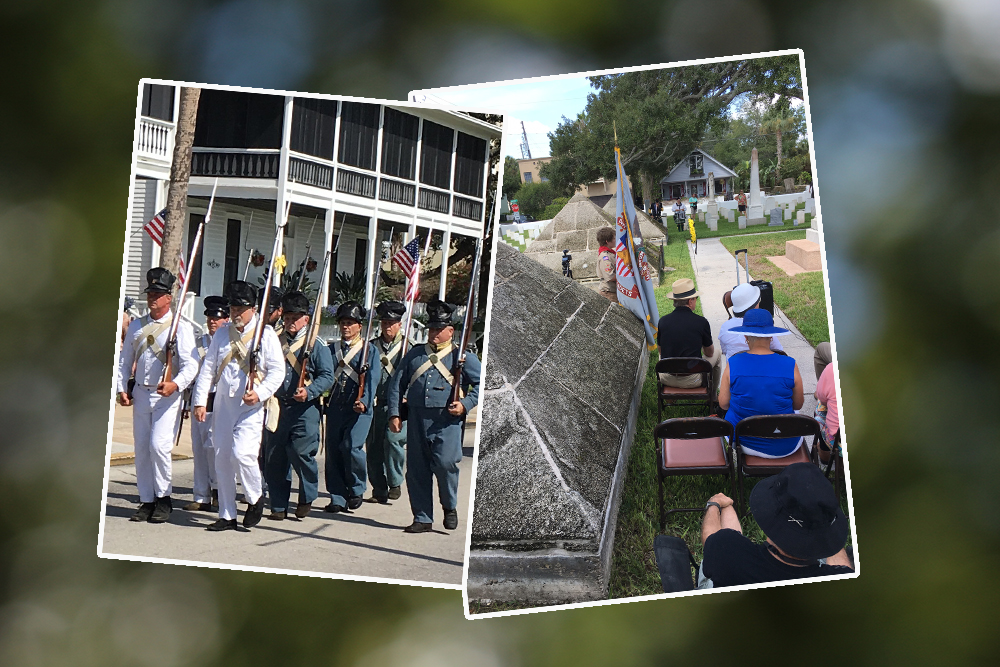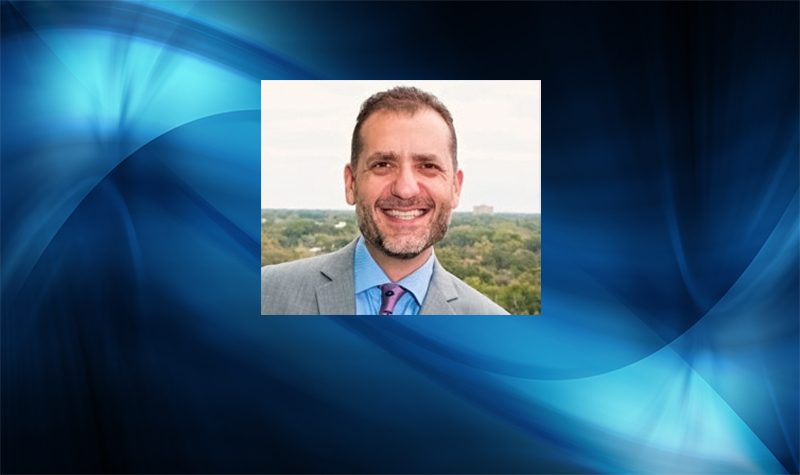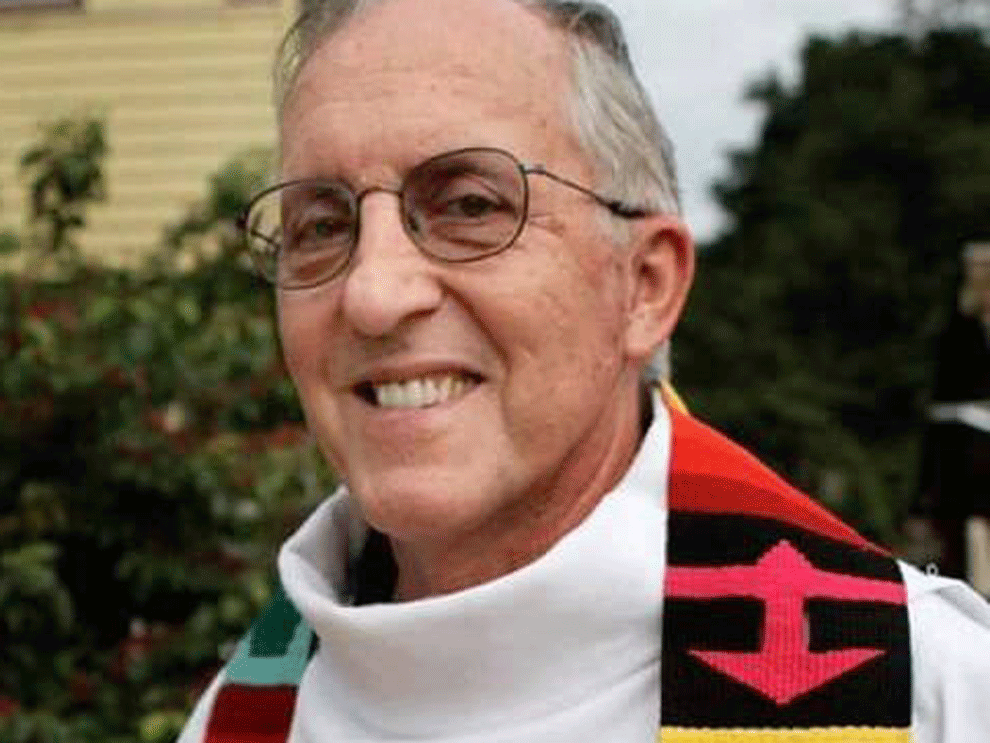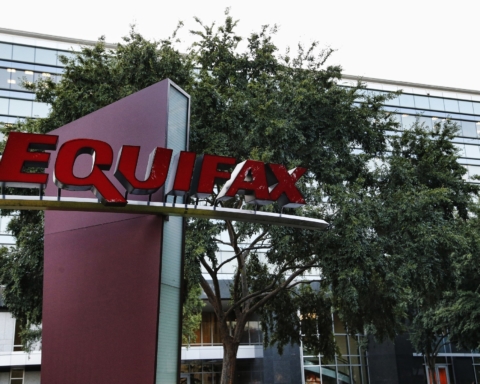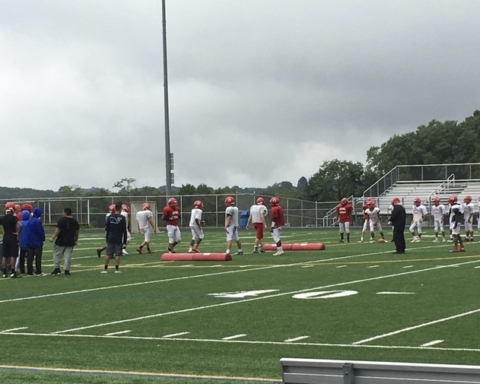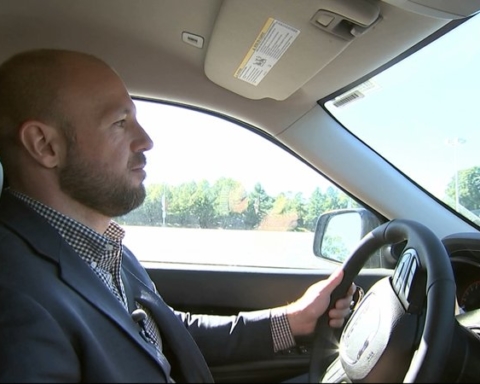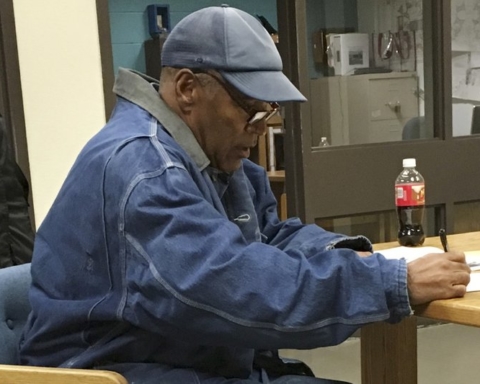The drum beat a slow, mournful cadence as a procession of soldiers in 1842 uniforms led by two mounted cavalrymen proceeded down St. Augustine’s Marine Street to the National Cemetery where Maj. Francis Dade and all but two men of his command are buried.
The event is an annual re-enactment of the burial of the more than 100 soldiers in St. Augustine, seven years after they were massacred en route to Fort King (Ocala).
Although a separate and annual event, the parade and service coincided with the start of the first biennial Convocation of Seminole War Historians over the weekend. Historians, researchers, archeologists and re-enactors gathered for the two-day conference of the longest conflict between the U.S. and native Americans.
Among those in attendance and presenting research were John and Mary Lou Missall who have written five books on the three wars. Patsy West, who has followed the Seminole nation from its final defeat to its successes in the 21st-century, discussed her book “The Enduring Seminoles: From Hard Times to Hard Rock.
She followed the small remnants of Seminoles left in Florida after the third war ended in 1858. For decades, they largely avoided the white people moving into Florida, then slowly they opened roadside stands of handcrafted goods, progressing to Seminole “villages” and alligator wrestling, casinos and then the purchase of Hard Rock International from its British owners.
“Now, the sun never sets on Seminole lands,” she quipped.
A special presentation went to Frank Laumer, who has spent 50 years researching the Dade Massacre and even obtaining permission to exhume and examine the body of Ransom Clark, one of the survivors of the Dade Massacre.
Moses Osceola, chief judge of the Tribal Court of the Seminole Tribe of Florida also attended. The work on histories of the wars is important to continue education, he said.
“This is very important to our people. There had been information and traditions passed down by the elders, but many of the young people no longer know the stories and fewer know the languages,” he said .
“I actually found gaps in my history that I was not aware of,” Osceola told members of the convocation.
Preserving the historic sites of forts, battlefields and Seminole-Creek and Mikasuki villages against development or even placing just a historic marker can often be a struggle.
One success story discussed is the siting and planned reconstruction of Fort King near Ocala, it was the site of the scene of war leader Osceola’s fight with an Indian agent and the goal of the troops under Dade when they were massacred near present day Bushnell.
Many places, however have not been successfully saved sometimes because of the lack of understanding from developers, local officials and often, the general public.
“There is still much to learn about those critical years in the state and nation’s development from those wars,” said Steve Rick, president of the Seminole Wars Foundation.

